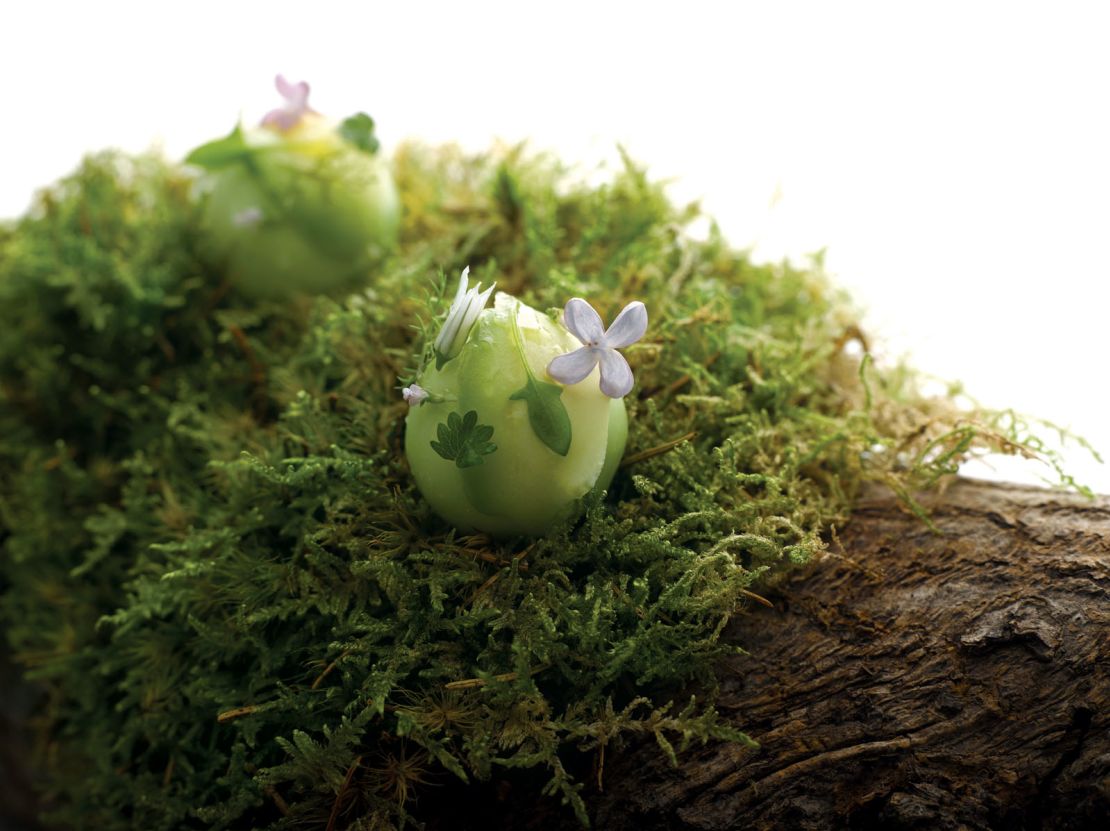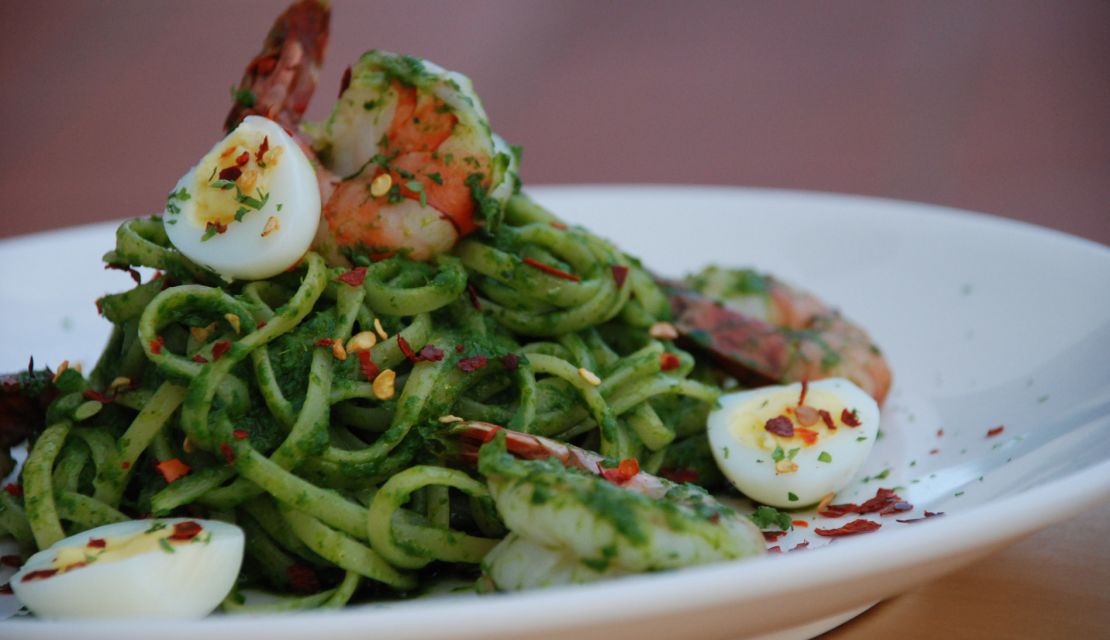Story highlights
Newly launched Singapore Michelin Guide lists 29 starred restaurants
Among them are two street food vendors with one star apiece
French restaurant Joel Robuchon is the sole three-star venue
Was there ever any doubt about Singapore’s status as a world-class dining destination? Not now that the Michelin Guide has landed, that’s for sure.
The fine dining bible scattered its coveted stars on no fewer than 29 establishments – among them two street food vendors.
There was also one highly prized three-star accolade for grand French restaurant Joel Robuchon, presided over by its namesake, the world’s most-decorated Michelin starred chef.
Traditionally new Michelin Guide launches are discreet, invitation-only events, but Singapore’s – eight years in the making – launched with a bang on July 21, 2016. The awards ceremony was held alongside a ticketed gala dinner catering to more than 600 guests, with tickets priced at an eye-watering 450 Singapore dollars (U.S.$333) per head.
Local chefs shine
That fee, naturally, included a multiple course tasting menu overseen by Robuchon alongside a clutch of local chefs including Malcolm Lee, chef-owner of one Michelin-starred Candlenut and Cheryl Koh, pastry chef of two Michelin-starred Les Amis.

In total, six restaurants were awarded two stars – including a second Robuchon venue, L’Atelier Robuchon – two more French restaurants, sushi place Shoukouwa and Chinese restaurant Shisen Hanten.
A further 22 netted single star ratings, including street food outlets Hill Street Tai Hwa Pork Noodle and Hong Kong Soya Sauce Chicken Rice & Noodle.
For those involved in Singapore’s food scene, Michelin’s arrival is a big deal, although not one without controversy.
“It feels exciting to have the Michelin Guide in Singapore,” says Litti Kewkacha, a Bangkok-based restaurateur/theme park owner who travels to eat in Singapore five to six times a year.
“Singapore has been gearing towards the luxury, high net worth travelers for many years, inviting big name chefs and high investment restaurants to the city.
“At that level, restaurants don’t just compete domestically but internationally and Michelin ratings will help to boost Singapore’s credibility.”
The essential Singapore dining checklist
A reason to stay
The city’s chefs agree.
“Michelin is a food authority,” says Tetsuya Wakuda, the feted Japanese chef who owns Tetsuya’s in Sydney and one Michelin-starred Waku Ghin at Singapore’s Marina Bay Sands.
“Its launch in Singapore gives the city – and its restaurants – due recognition as a food city. it’s no longer just a transit city, there are reasons to stay and eat.”
“Yes, it’s a big deal for Singapore,” agrees Andre Chiang, the Taiwan-born, French-trained chef-owner of two Michelin-starred Restaurant Andre. An avid follower of the Michelin Guides, Chiang has an entire collection of France Michelin Guides dating from the 1960s.
“While the locals may already have their pool of favorite eateries, the guide will become the de-facto reference point for tourists,” says Chiang, whose restaurant clientele has a make-up of about 50% tourists.
“Not only that, the guide will help to cream off great restaurants from the rest, it will provide motivation for mid-tier restaurants to work harder to snag the first star.”
Local cuisine overlooked
“The Michelin Guide is highly regarded globally,” says Jason Tan, chef-owner of the one Michelin-starred Corner House.
“We are grateful for the recognition and hope that we can continue to wow diners while working hard to keep the restaurant busy.”

Despite the raves, the Michelin Guide is not without detractors who worry about the effect on Singapore’s homegrown cooks.
“While we have many top caliber chefs in Singapore who are cooking at a very high level, we should not ignore our pool of local talents who have strived tirelessly to elevate our local cuisine to the next level,” says one newly minted Michelin-starred chef who spoke on condition of anonymity.
“Despite their great work, some of them have not been recognized in the guide.”
Chili crabs and laksa: 10 Singapore street foods you’ll love
Indeed, a handful of restaurants by Singaporean chefs promoting contemporary local cuisine – including Wild Rocket, which debuted on the Asia’s 50 Best list at No. 38 this year – has been snubbed by the inaugural Michelin Guide.
But they are not alone.
“With the amount of international recognition Burnt Ends has been receiving, it’s perplexing how David Pynt’s delicious BBQ joint has also been snubbed a Michelin star,” says Hardwi Satrio Pinandityo, a food-loving entrepreneur from Jakarta.
Burnt Ends debuted on the World’s 100 Best list this year at No. 70; it also ranked No.14 on the Asia’s 50 Best list in 2016.
Like in other Asian destinations, Michelin has partnered with local tourism authorities.
“That, for me, is fair,” says Kewkacha. “You pay to bring them into the country but inspectors can – and should – be impartial when it comes to grading individual restaurants.”
‘Almost insulting’
Singapore's Best Street Food
But Kewkacha questioned another strategy of having private companies as sponsors.
“Especially ones that are directly connected by owning restaurants that are to be graded themselves,” he continues.
He points out that four food establishments from sponsor Resorts World Sentosa – Forest, Osia, L’Atelier de Joel Robuchon and Joel Robuchon Restaurant – walked away with stars.
“The Michelin Guide is the most respected and revered foodie guide in the world,” says Kewkacha. “I hope that it doesn’t get tainted by having sponsors’ dealings for the first time, at least publicly, in Singapore.”
The ‘hawkerpreneurs’ keeping Singapore’s street food alive
More discontent was evident when Michelin Singapore announced its inaugural Bib Gourmand results last week – recognizing restaurants that offer good food at cheaper prices.
Yeoh Wee Teck, a food writer from Singapore’s New Paper, complained that despite having 15,000 food stalls or hawkers, the island saw only 34 eateries (14 restaurants, 17 hawker stalls and three food stalls in coffee shops) make the grade.
“Can they be truly reflective of the rich diversity of our hawker heritage, especially when some local favorites are missed on the list?” he said, describing the limited choice as “almost insulting.”
Here’s the 2016 list:
* * *
Joël Robuchon, French contemporary
* *
Restaurant André, innovative
L’Atelier de Joël Robuchon, French contemporary
Les Amis, French
Odette, French contemporary
Shisen Hanten, Chinese
Shoukouwa, sushi
*
Alma, European contemporary
The Kitchen at Bacchanalia, innovative
Béni, French contemporary
Candlenut, Peranakan
Corner House, innovative
Crystal Jade Golden Palace, Chinese
Cut, steakhouse
Forest, Chinese contemporary
Hill Street Tai Hwa Pork Noodle, street food
Hong Kong Soya Sauce Chicken Rice & Noodle, street food
Jaan, French contemporary
Lei Garden, Cantonese
Osia, Australian contemporary
Putien (Kitchener Road), Fujian
Rhubarb, French
Shinji (Beach Road), sushi
Shinji (Tanglin Road), sushi
Summer Pavillion, Cantonese
Sushi Ichi, Sushi
Terra, Italian
The Song of India, Indian
Waku Ghin, Japanese





















